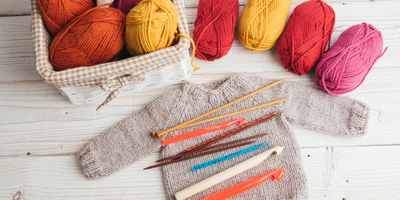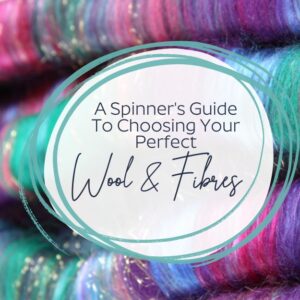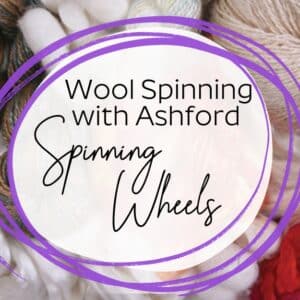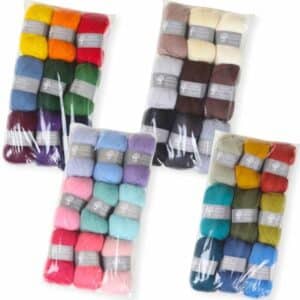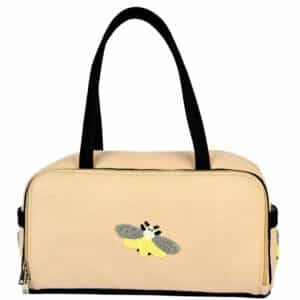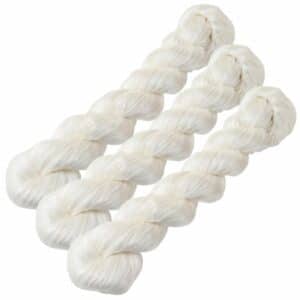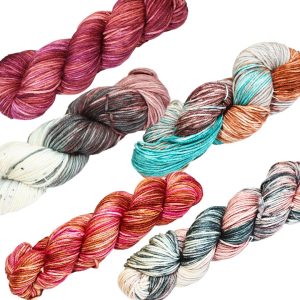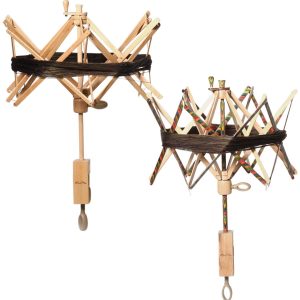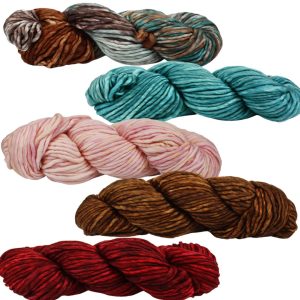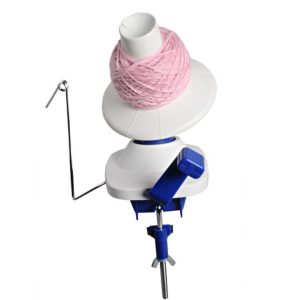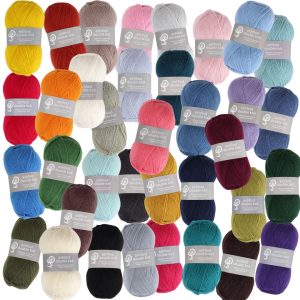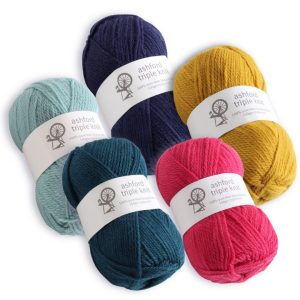Are you not entirely sure what the difference between superwash and non-superwash yarn is?
It’s a question that I get asked quite often, so thought I would take a moment to explain a few differences
Superwash wool is put through a process and specially treated, to make it the perfect machine washable yarn. Whether or not a yarn is superwash, affects its overall qualities and therefore will also help determine the kind of projects that you might decide to use each one for.
There are multiple purposes that lead knitters and crocheters alike make a choice between superwash or non-superwash yarn for a project. Many knitters, crochet enthusiasts & weavers love the sheen, colour fullness and ease of care that a superwash yarn gives. While other handicrafters enjoy the familiar woolly smell and traditional feel of a non-superwash wool.
You may have already been aware that wool is a protein type fibre. Each strand is made up of overlapping miniscule plates. It is referred to as ‘felting’ when these plates stick together. Rapid changes in temperature can shake up the fibre, causing these plates to open up. Any resulting disturbance or friction often results in them catching on each other.
Superwash yarns have been processed in a couple of ways. Either chemically, to remove the small plates from the fibre. Or alternatively, they have been coated with an exceptionally thin layer of polymer resin to achieve the same outcome. Both techniques ultimately smooth out the fibres and stop the small plates sticking together. This then stops the wool from felting or shrinking when it is washed. From a sustainability point of view, this process is less than ideal as it uses chemicals and creates waste.
Superwash wool is perfect for projects that may end up being popped in the clothes dryer
Adding colourful dyes to your yarn
When dyeing protein fibres, acid dyes are most often used. These are types of dye which requires heat to set them to the fibre. Huge vats are used to commercially dye wool. On the other hand, hand dyers often use a wide variety of methods to apply and set the dye. You can see Ashford new range of dyes here
Once the small fibres of superwash wool are smoothed out, the yarn develops a sheen. Making it easier to take up the dye. This gives the vivid, saturated colours that so many knitters love to knit with. The superwash process also creates yarn that allows you to be a little less gentle with during the dyeing process. This is because the wool is much less likely to felt, both at elevated temperatures or while being moved around in the water.
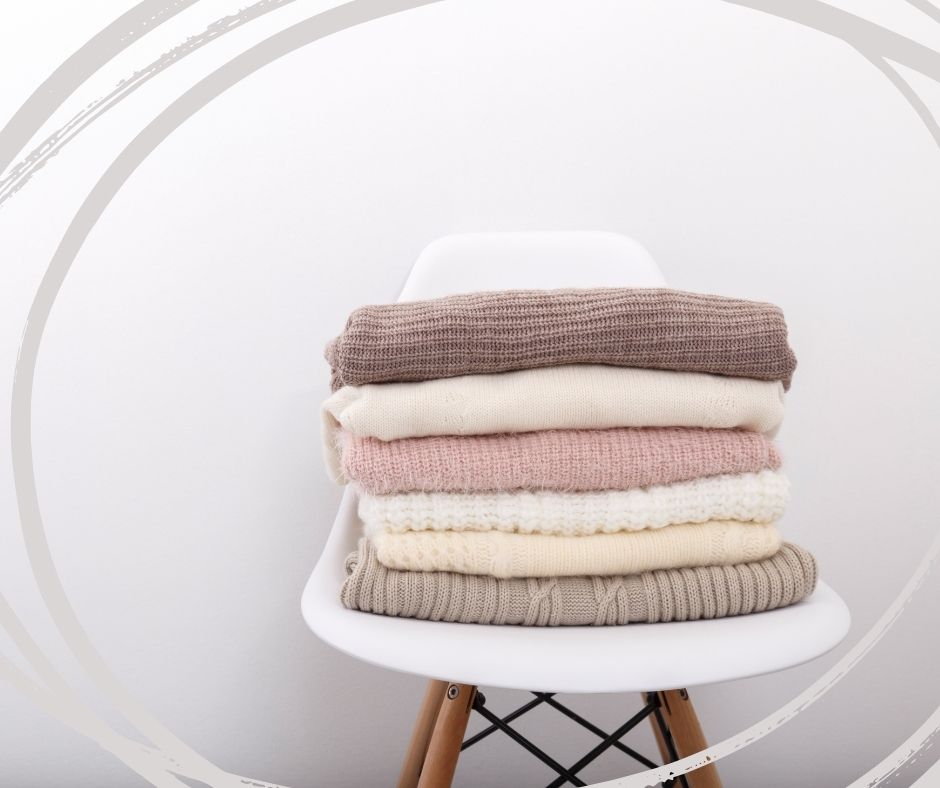
Now you understand what makes a superwash characteristics different, it makes it easier to understand what a non-superwash wool is.
A non superwash yarn needs more care during the dyeing process. You will need to be careful to ensure that the temperature doesn’t get too hot and it isn’t agitated during whilst being dyed. This makes it a slower process. The yarn needs to be heated at a slower pace and often kept to a lower temperature. Keeping the yarn at a lower temperatures means it can be harder or take longer for the wool to accept the dye.
Knitting and weaving with superwash or non-superwash wool
Many knitters & weavers easily detect a difference when working with superwash yarn compared to non-superwash yarns. As non-superwash yarns still have the small plates on the fibre, your stitches will stick together and then grow when washed. This makes non-superwash wools perfect for colourful designs, creating more connection between the knitted or crocheted stitches. This often creates a smoother effect across patterns with lots of colour. It can mean that your stitches are less likely to unravel and that dropped stitches are often easier to pick up.
Many knitters prefer knitting with superwash wool. Due to its smoothness, it is often the recommended choice for such as baby gifts, socks & other items that may sit close to skin. With most agreeing that the stitches easily glide across your needles. Creating a beautiful, soft textile material. Very often superwash yarns have less body and more drape, making then the perfect choice for lightweight jumpers and finer items.
Caring for your wool
If you’re looking for an easier to care for option for your next project, maybe something that can be regularly thrown in with the rest of your washing? Then superwash yarn is the recommended choice. As explained earlier, it is unlikely to felt or shrink. In addition, many superwash wools can also be popped in the clothes dryer however, its important to check care instructions on the label first.
Take a quick look at our yarns here or some of our youtube tutorials here
See more helpful articles here
- Learn About Ashfords Table Loom Shuttle RacesWhat is a Shuttle Race and How Does it Help Your Weaving? If you’ve ever experienced the frustration of a boat shuttle diving between your warp threads, you’re not alone. Many weavers face this challenge when using table looms…..[KEEP READING]..
- Step-by-Step Guide to Beautiful Hemstitching: Tips and Tricks for Perfect EdgesWhat is Hemstitching? Hemstitching in weaving is a simple, decorative way to finish the edges of your weaving project, giving it a neat and polished look. It’s often used at the beginning and end of scarves, table runners, or…..[KEEP READING]..
- A Guide to Creating Gorgeous Gradient Batts on Your Ashford Blending BoardOne of our most popular accessories that we sell, is the Ashford Blending Board. It’s not just versatile and portable, but it’s also a game-changer when it comes to blending fibres into beautiful, gradient batts. Whether you’re watching your…..[KEEP READING]..
- Using Wavy Shuttles in Your Weaving: A Fun Twist on a Classic CraftWavy shuttles add texture, movement, and a playful touch to your woven fabrics. Weaving is an art form that has been cherished for centuries, offering a therapeutic escape from the hustle and bustle of everyday life. For crafters, weaving…..[KEEP READING]..
- A Spinner’s Guide To Choosing Your Perfect Wool & Fibres For Spinning YarnChoosing Your Fibres and Wool for Spinning Yarn So, you’ve decided to embark on the wonderful world of spinning! With a dizzying array of fibres out there, it can be overwhelming to know where to start. Fear not, fellow…..[KEEP READING]..
- The Magical World of Wool Spinning with Ashford Spinning WheelsDive into the Magical World of Wool Spinning with Ashford Spinning Wheels Have you ever admired the unique texture of handspun yarn or been mesmerised by videos of wool effortlessly transforming into fluffy clouds? If you’ve felt that spark…..[KEEP READING]..
-
The Wool Lover’s DK Yarn Pack$112.50 inc GST
-
Knitting Bag – Duffle Style – Bumblebee$98.95 inc GST
-
Ashford Silk Yarn 20/2Product on sale$38.50 inc GST
-
Fiori Australian DK IV Hand Dyed Merino Yarn$26.00 inc GST
-
Swift / Skein Winder – KnitPro$189.95 inc GST
-
Fiori Grande Bulky Australian Merino Yarn$28.95 inc GST
-
Yarn Ball Winder – Knitpro$64.95 inc GST
-
Ashford Double Knit 8 Ply Yarn$0.00 – $12.95 inc GST
-
Triple Knit Yarn Packs – 500gm Multicolour Bright & Bold$69.75 inc GST

